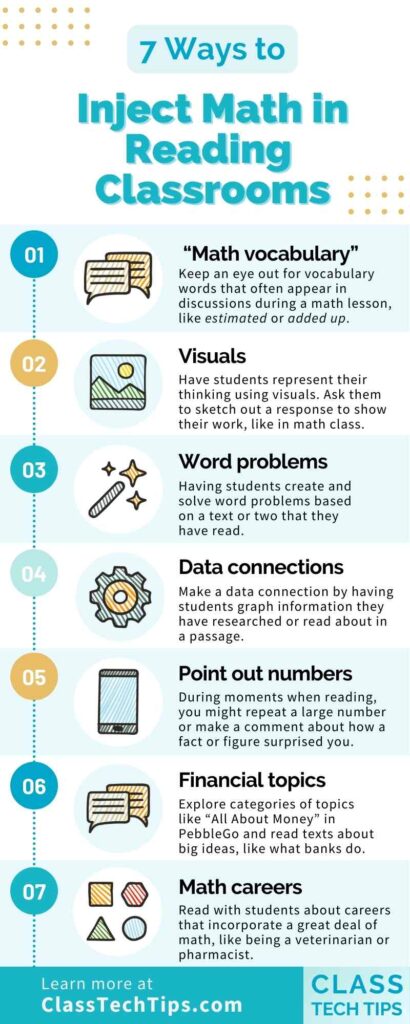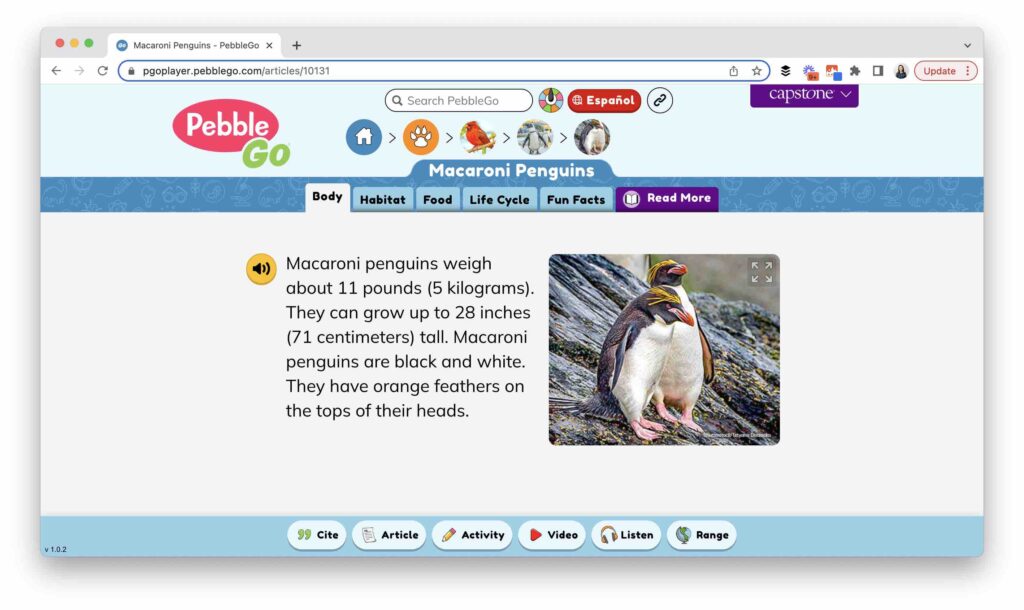How do you fit math in reading and writing activities? As an elementary school teacher, I worked with the same group of students throughout the day to teach a variety of subject areas. To make the most of our time together, I made lots of cross-curricular connections. So if you are looking for ideas on how to inject math in reading activities, you’ve come to the right place.
In today’s blog post, I’ll take you through seven adaptable tips that can help you find ways to inject math in reading activities at various levels. In addition to this list of seven, I have a PebbleGo connection to share, too. Peppered throughout the list of tips below, you’ll find a series of examples of PebbleGo articles that bring these ideas to life.

PebbleGo: Math in Reading Activities
Have you seen PebbleGo in action yet? Regular readers of the blog know that I’m a fan of all things Capstone. They are the company behind PebbleGo, which offers students and teachers quick access to high-quality, high-interest reading materials. I just had a chance to meet with their team at the TCEA Conference in San Antonio last month, and it was very exciting to hear about what is in store with Capstone this year.
To learn more about PebbleGo, you can head straight to their website or check out one of my recent blog posts. I started this year with a post on connections to social studies instruction and another on science and reading connections.
Ready to explore ways to inject math in reading classrooms? Let’s jump into the list of seven tips.
7 Ways to Inject Math in Reading Classrooms
Noticing “math vocabulary”
As you read with students, keep an eye out for vocabulary words that often appear in discussions during a math lesson. This could include terms like estimated or added up. Since words like these come up in all parts of our lives, you might point them out to students or spend a week making a running list of all the times you noticed a specific word.
Represent thinking with visuals
Although a traditional reading response might ask students to write a sentence summary or answer a question with a few sentences, have students represent their thinking in other ways. For example, you might encourage them to sketch out a response similar to how they show their work in the math classroom.
Encourage students to create visuals that represent their thinking. You can do this as you make a clear connection to what happens during other parts of the school day. For example, you might say, “This reminds me of how we show our work when answering math problems after lunchtime.”

Write word problems
Having students create and solve word problems based on a text they have read. You might ask them to choose between two passages, like this one on Macaroni Penguins or this one on Bearded Dragons. Then they can write a word problem inspired by what they read.
Data connections
When students read a passage, facts, and figures are often shared about that topic. You might make a data connection by having students graph information they have researched. For example, you might ask students to research landmarks and make a graph including the heights of each one. In Pebble Go, you’ll find articles about Big Ben and the Roman Colosseum that both include the measurements of these landmarks.
Point out numbers
As students conduct research or read an article, they often come across numbers. You can point out numbers as they read in the same way you might point out the caption of a photograph. This could include moments where you repeat a large number or make a comment about how a fact or figure surprised you.

Exploring financial topics
Another way to think about the role of math in reading classrooms is by looking for categories of topics like “All About Money” in PebbleGo. You’ll find this category ready for students to explore. It covers topics like What Do Banks Do? and Saving Money. So even if you aren’t teaching financial literacy, you can make a math in reading connection.
Math careers
Since math is part of our everyday lives, you might read with students about careers that incorporate a great deal of math. For example, you might explore jobs like a Pharmacist who keeps close track of prescriptions or a Veterinarian who listens to an animal’s heartbeat.
There are so many ways to support cross-curricular connections throughout the school day. If you want to make sure that math has a role in your reading classroom, try one of the tips listed above! And don’t forget to head to PebbleGo’s website to get started with this fantastic platform for student readers.







